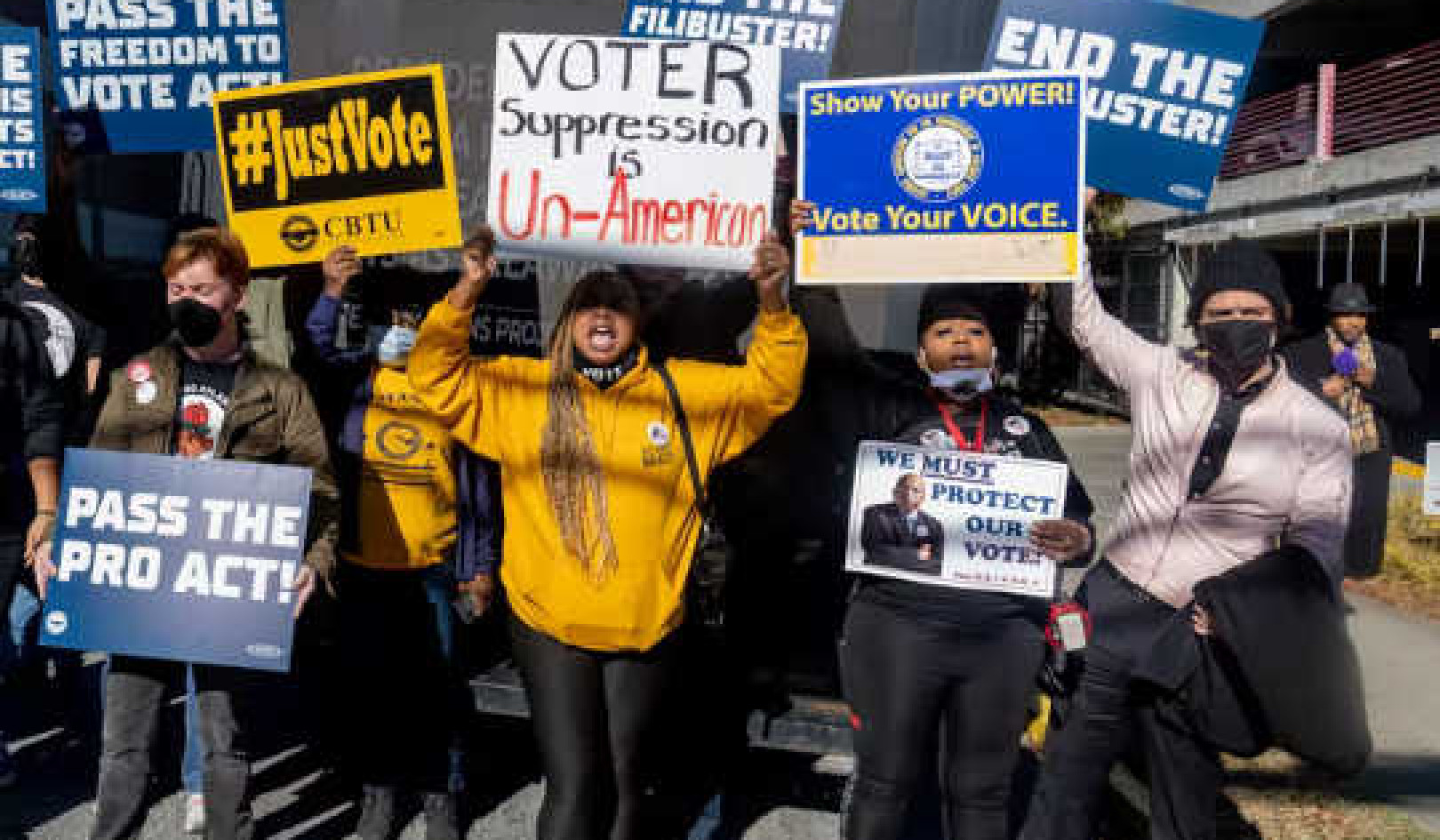
Unlike applying for a credit card, buy now, pay later services don’t require consumers to get a credit check. (Shutterstock)
Buy now, pay later is a relatively new form of financial technology that allows consumers to purchase an item immediately and repay the balance at a later time in instalments.
Unlike applying for a credit card, buy now, pay later doesn’t require a credit check. Instead, these programs use algorithms to perform “soft” credit checks to determine a shopper’s eligibility.
This means buy now, pay later loans target low-income, tech-savvy millennials and Gen Z shoppers in an effort to supposedly improve financial inclusion for these groups.
However, the newness of buy now, pay later programs means existing consumer credit laws don’t cover it. This lack of regulation puts shoppers at financial risk of accumulating higher levels of debt.
Credit cards versus buy now, pay later
There are three key differences between credit cards and buy now, pay later loans. First, while buy now, pay later loans are a line of credit like credit cards are, they don’t impact credit reports. Because of this, shoppers might be less cautious when using buy now, pay later services.
Credit cards typically have annual interest rates ranging from 15 to 26 per cent. While most buy now, pay later loans have no interest, longer term loans have annual interest rates of about 37 per cent.
Shoppers are at risk of overusing buy now, pay later programs and accumulating more debt than they can manage. In addition, formal lenders, such as banks, currently have no way of knowing what buy now, pay later debt a person is carrying. The lender, therefore, likely incurs more risk than they are aware of.
Second, credit cards typically provide an interest-free period, after which borrowers must pay interest. In contrast, buy now, pay later users typically don’t have interest fees, but can incur late fees for missed or late payments.
Falling behind on payment terms can result in charges that exceed typical credit card interest rates, causing more harm than interest payments. Low-income buy now, pay later users are particularly vulnerable to using overdrafts to cover their buy now, pay later payments.
Third, people typically have just a few credit cards, making it easier to keep track of payments. Buy now, pay later users, on the other hand, usually engage with multiple buy now, pay later lenders through retailers. As a result, it’s difficult for them to keep track of all the buy now, pay later lenders and retailers they made purchases from.
What are the Canadian governments doing?
Canada classifies buy now, pay later as an unsecured instalment loan, which means lenders are subject to laws at the federal and provincial levels.
Under federal law, there is an annual interest rate cap of 60 per cent. Provincial laws require buy now, pay later lenders to disclose the cost of credit and extend consumer protection rights to buy now, pay later shoppers.
At the provincial level, specific laws come into play. Manitoba, Alberta, Québec, and Ontario have passed laws that require lenders to be licensed before they offer these products and be subject to regulatory oversight.
These laws regulate high-cost credit products that have annual rates of 32 per cent or higher. This means buy now, pay later services should fall under this category. However, I found no evidence of buy now, pay later lenders being licensed in Canada. This means either lenders are not aware they fall under these laws, or no one is enforcing them.
This ambiguity over whether or not buy now, pay later lenders are subject to regulatory oversight could be a hindrance for banks like the Bank of Nova Scotia and the Canadian Imperial Bank of Commerce, as it deters them from entering the buy now, pay later market despite its profitability.
Questions to ask before using buy now, pay later
Before signing up for a buy now, pay later loan, shoppers should consider the following six questions.
1. Payment structure. How much of the invoice amount needs to be paid upfront? The norm is typically 25 per cent. What is the number of remaining instalments? The answer to this is usually four. Lastly, what is the frequency of instalments? The norm is biweekly.
2. Sensitive information. Does the lender require you to provide information about your chequing account? This is sensitive information to give away and puts you at risk of data breaches. Most buy now, pay later lenders withdraw instalment amounts from chequing accounts or debit cards, potentially exposing shoppers to greater risks than credit cards.
3. Interest charges Does the buy now, pay later lender charge interest on instalment payments? The norm is no.
4. Late fees How much is the late fee, when does it apply and what is the maximum amount of the late fee? Typically, late fees don’t exceed $8 or one-quarter of the invoice amount. Late fees usually kick in if your scheduled payment remains unpaid after 10 days.
5. Data responsibility. Who is responsible for your data? Whether it’s the retailer, the buy now, pay later lender or a company whose cloud storage the provider may be using, you should know. In general, the buy now, pay later lender holds this responsibility.
6. Licensing. Is the buy now, pay later lender licensed to sell the loan? Usually, the answer to this question is no.
Buy now, pay later regulation
Two sets of laws and regulations should be implemented to address some of these issues. The first set of regulations focuses on how buy now, pay later lenders interact with consumers. These lenders should clearly communicate all terms and conditions of their loans, including late charges, interest charges and payment schedules, on their platforms to ensure shoppers are fully informed of their financial obligations.
The Financial Conduct Authority in the United Kingdom recently issued guidelines allowing buy now, pay later lenders to terminate, suspend or restrict access to shopper accounts for any reason without notice. Effective September 2024, New Zealand will require buy now, pay later lenders to check a shopper’s credit before providing them a buy now, pay later loan.
The second set of regulations defines the scope and boundaries of buy now, pay later lenders. On Dec. 9, 2022, California became the first American state to classify buy now, pay later as a loan. Such classifications allowed California regulators to question lenders about their transparency in disclosing the terms of their offerings.
The hope is that these laws and regulations will facilitate microlending and not impede the existence of buy now, pay later services, but rather make it safer and more secure for both lenders and users.![]()
Vivek Astvansh, Associate Professor of Quantitative Marketing and Analytics, McGill University and Chandan Kumar Behera, PhD Student in Marketing, Indian Institute of Management Lucknow
This article is republished from The Conversation under a Creative Commons license. Read the original article.
Recommended books:
Capital in the Twenty-First Century
by Thomas Piketty. (Translated by Arthur Goldhammer)
 In Capital in the Twenty-First Century, Thomas Piketty analyzes a unique collection of data from twenty countries, ranging as far back as the eighteenth century, to uncover key economic and social patterns. But economic trends are not acts of God. Political action has curbed dangerous inequalities in the past, says Thomas Piketty, and may do so again. A work of extraordinary ambition, originality, and rigor, Capital in the Twenty-First Century reorients our understanding of economic history and confronts us with sobering lessons for today. His findings will transform debate and set the agenda for the next generation of thought about wealth and inequality.
In Capital in the Twenty-First Century, Thomas Piketty analyzes a unique collection of data from twenty countries, ranging as far back as the eighteenth century, to uncover key economic and social patterns. But economic trends are not acts of God. Political action has curbed dangerous inequalities in the past, says Thomas Piketty, and may do so again. A work of extraordinary ambition, originality, and rigor, Capital in the Twenty-First Century reorients our understanding of economic history and confronts us with sobering lessons for today. His findings will transform debate and set the agenda for the next generation of thought about wealth and inequality.
Click here for more info and/or to order this book on Amazon.
Nature's Fortune: How Business and Society Thrive by Investing in Nature
by Mark R. Tercek and Jonathan S. Adams.
 What is nature worth? The answer to this question—which traditionally has been framed in environmental terms—is revolutionizing the way we do business. In Nature’s Fortune, Mark Tercek, CEO of The Nature Conservancy and former investment banker, and science writer Jonathan Adams argue that nature is not only the foundation of human well-being, but also the smartest commercial investment any business or government can make. The forests, floodplains, and oyster reefs often seen simply as raw materials or as obstacles to be cleared in the name of progress are, in fact as important to our future prosperity as technology or law or business innovation. Nature’s Fortune offers an essential guide to the world’s economic—and environmental—well-being.
What is nature worth? The answer to this question—which traditionally has been framed in environmental terms—is revolutionizing the way we do business. In Nature’s Fortune, Mark Tercek, CEO of The Nature Conservancy and former investment banker, and science writer Jonathan Adams argue that nature is not only the foundation of human well-being, but also the smartest commercial investment any business or government can make. The forests, floodplains, and oyster reefs often seen simply as raw materials or as obstacles to be cleared in the name of progress are, in fact as important to our future prosperity as technology or law or business innovation. Nature’s Fortune offers an essential guide to the world’s economic—and environmental—well-being.
Click here for more info and/or to order this book on Amazon.
Beyond Outrage: What has gone wrong with our economy and our democracy, and how to fix it -- by Robert B. Reich
 In this timely book, Robert B. Reich argues that nothing good happens in Washington unless citizens are energized and organized to make sure Washington acts in the public good. The first step is to see the big picture. Beyond Outrage connects the dots, showing why the increasing share of income and wealth going to the top has hobbled jobs and growth for everyone else, undermining our democracy; caused Americans to become increasingly cynical about public life; and turned many Americans against one another. He also explains why the proposals of the “regressive right” are dead wrong and provides a clear roadmap of what must be done instead. Here’s a plan for action for everyone who cares about the future of America.
In this timely book, Robert B. Reich argues that nothing good happens in Washington unless citizens are energized and organized to make sure Washington acts in the public good. The first step is to see the big picture. Beyond Outrage connects the dots, showing why the increasing share of income and wealth going to the top has hobbled jobs and growth for everyone else, undermining our democracy; caused Americans to become increasingly cynical about public life; and turned many Americans against one another. He also explains why the proposals of the “regressive right” are dead wrong and provides a clear roadmap of what must be done instead. Here’s a plan for action for everyone who cares about the future of America.
Click here for more info or to order this book on Amazon.
This Changes Everything: Occupy Wall Street and the 99% Movement
by Sarah van Gelder and staff of YES! Magazine.
 This Changes Everything shows how the Occupy movement is shifting the way people view themselves and the world, the kind of society they believe is possible, and their own involvement in creating a society that works for the 99% rather than just the 1%. Attempts to pigeonhole this decentralized, fast-evolving movement have led to confusion and misperception. In this volume, the editors of YES! Magazine bring together voices from inside and outside the protests to convey the issues, possibilities, and personalities associated with the Occupy Wall Street movement. This book features contributions from Naomi Klein, David Korten, Rebecca Solnit, Ralph Nader, and others, as well as Occupy activists who were there from the beginning.
This Changes Everything shows how the Occupy movement is shifting the way people view themselves and the world, the kind of society they believe is possible, and their own involvement in creating a society that works for the 99% rather than just the 1%. Attempts to pigeonhole this decentralized, fast-evolving movement have led to confusion and misperception. In this volume, the editors of YES! Magazine bring together voices from inside and outside the protests to convey the issues, possibilities, and personalities associated with the Occupy Wall Street movement. This book features contributions from Naomi Klein, David Korten, Rebecca Solnit, Ralph Nader, and others, as well as Occupy activists who were there from the beginning.
Click here for more info and/or to order this book on Amazon.























